Queer Scientist Spotlight: Jane Rigby
"absolutely I am a *better* astronomer because I’m queer" - dr. jane rigby
On Christmas Day 2021, the James Webb Space Telescope (JWST) was launched. This cutting edge instrument delivers stunning high resolution images of deep space. A critical member of the NASA team behind the JWST is Dr. Jane Rigby. Rigby joined the project in 2010 and was promoted to Senior Project Scientist in 2023. In honor of her contributions to JWST and of her advocacy on behalf of queer astronomers, President Joe Biden awarded her the Presidential Medal of Freedom - the highest civilian honor in the United States.
Jane Rigby came out as lesbian in 2000 while a graduate student at the University of Arizona. In an interview, she described her coming out experience as “simple”:
I fell in love with a fellow grad student in the department. It was a close-knit department, so hiding would have been ludicrous. Nor did I want to hide the best thing in my life! So, we were out as grad students. I certainly heard people say awful homophobic things at work there. They weren’t directed at me, and they weren’t said by people with power over me.
In contrast to Rigby’s straightforward coming out, same-sex relationships were illegal in Arizona at the time - meaning that Rigby and her partner could have faced legal repercussions for their relationship. Arizona didn’t repeal its anti-sodomy law until 2001, one year after she began grad school.1
In this way, Rigby’s career tracks legal progress for queer rights in the 21st century. For years, she was compensated less than straight colleagues because the federal government (her employer) did not recognize same-sex marriages due to the Defense of Marriage Act (DOMA). Therefore, her wife could not be covered under her health insurance plan. This legal discrimination had tangible financial implications for Rigby, her wife, and their child:
That was a difference in compensation of thousands of dollars per year. Had my plane crashed on the way to a conference, my wife wouldn’t have received the survivor benefits and death-on-the-job benefits that a different-sex spouse would have received. We paid thousands of dollars in extra taxes every year.
In 2013, the Supreme Court struck down DOMA in the United States v. Windsor decision. Rigby, her wife, and their child were present outside the Supreme Court on the day of the ruling. Rigby’s family invested their subsequent tax savings in their child’s college fund.
the james webb space telescope
Jane Rigby joined the JWST team 14 years ago as the deputy operations project scientist at the Goddard Space Flight Center in Maryland. Last year, she became the senior project scientist for JWST. The space telescope has made headlines in recent years with its stunning images of deep space.
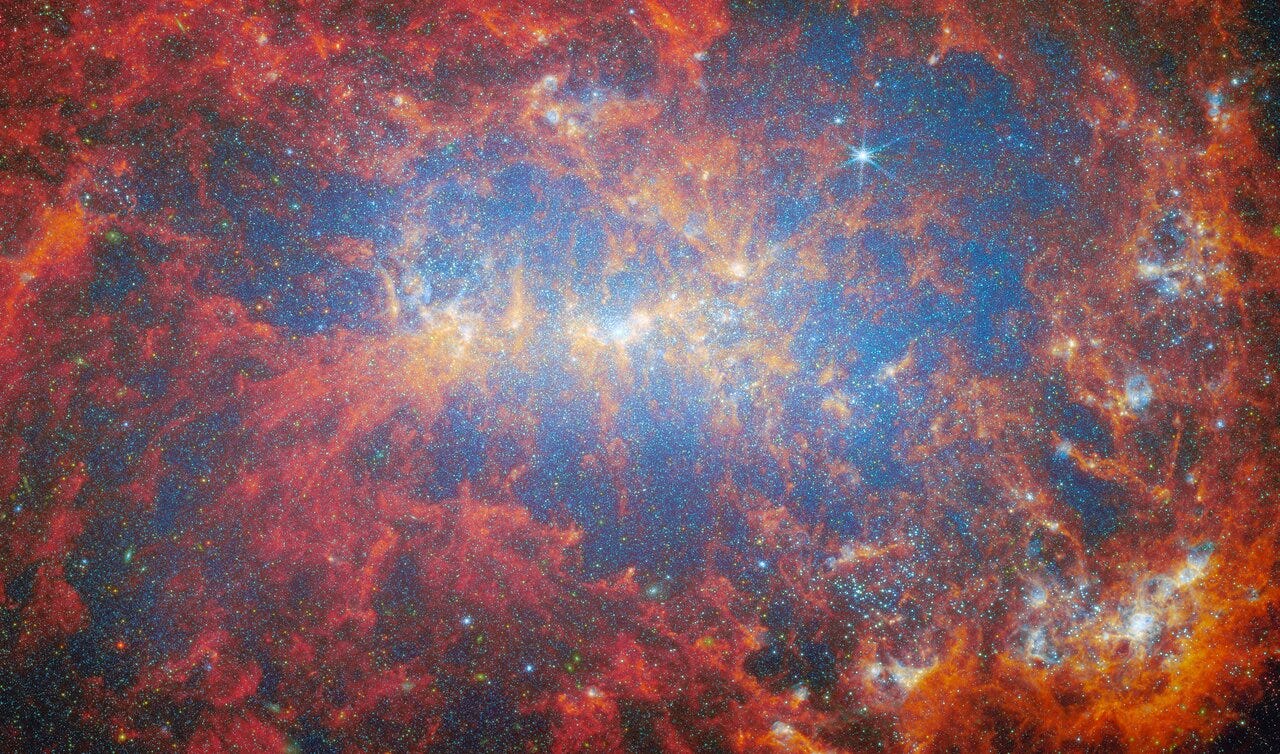
Most people compare JWST to the other mega telescope - The Hubble Space Telescope (launched in 1990). In fact, planning for what would become the JWST began shortly after the launch of Hubble because of a flaw in the primary mirror. Mirrors are critical for a telescope to take clear images because they help focus the light precisely on the camera. In the case of the original Hubble mirror, it was too flat by 2.2 µm or 0.000087 inches. This minuscule error led to Hubble’s first images being blurry. So, in 1993 a NASA mission was launched to alleviate the problem with 5 pairs of mirrors, but a plan for a new space telescope was already in the works.
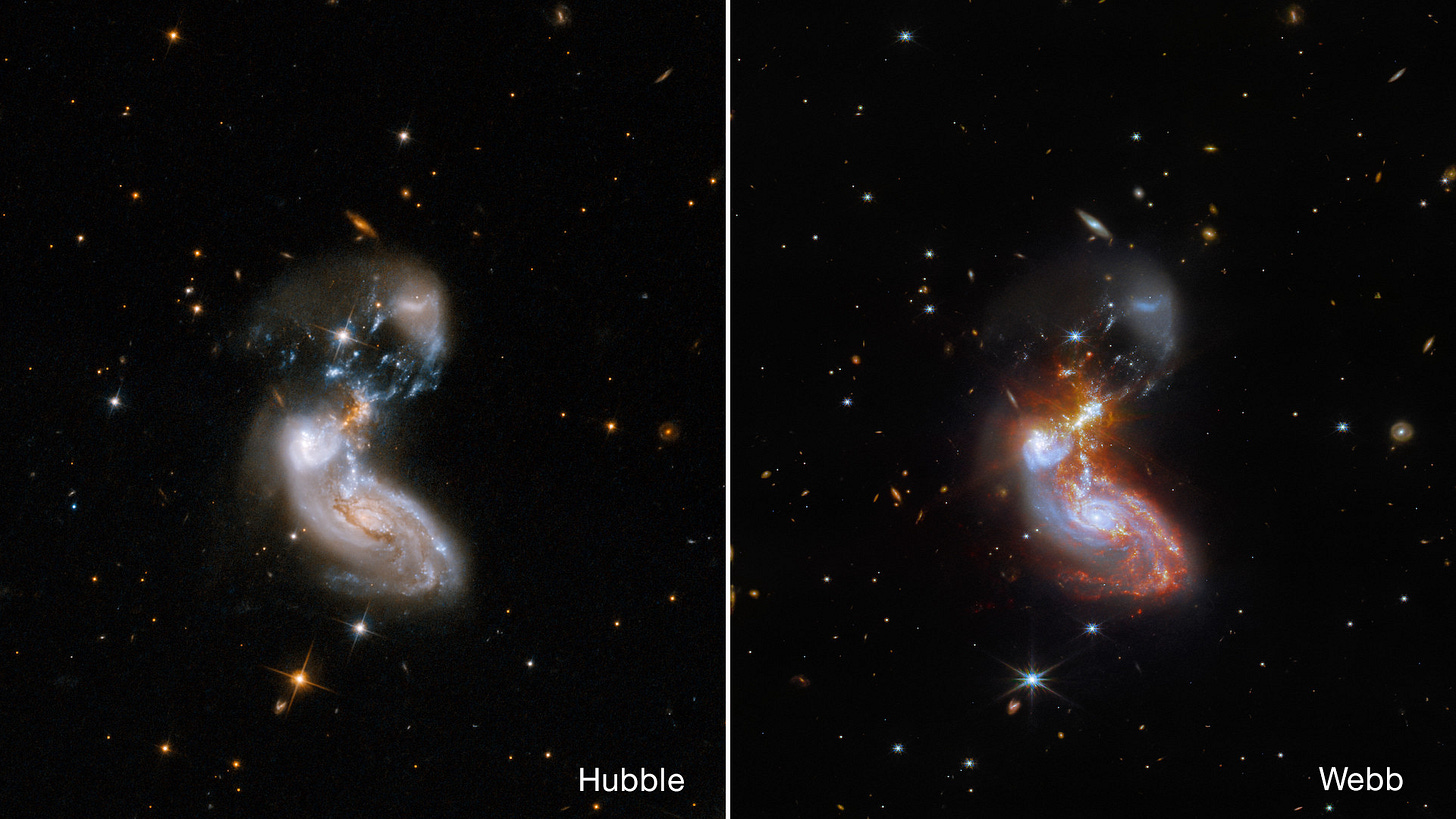
In the early 2000’s the JWST began to emerge. This telescope would permit scientists to take images of infrared light which presents a technical problem due to the very cold temperatures needed for infrared detection. To overcome this, the JWST team designed a large cryocooler that would circulate a helium refrigerant around the infrared detector to keep it cold. The resulting contraption is the size of a household refrigerator and is stuffed with 67 feet of thin tubing to carry the coolant. This instrument (paired with a massive detection mirror and shields against the sun’s heat) permits detection of infrared wavelengths never before observed by humanity.
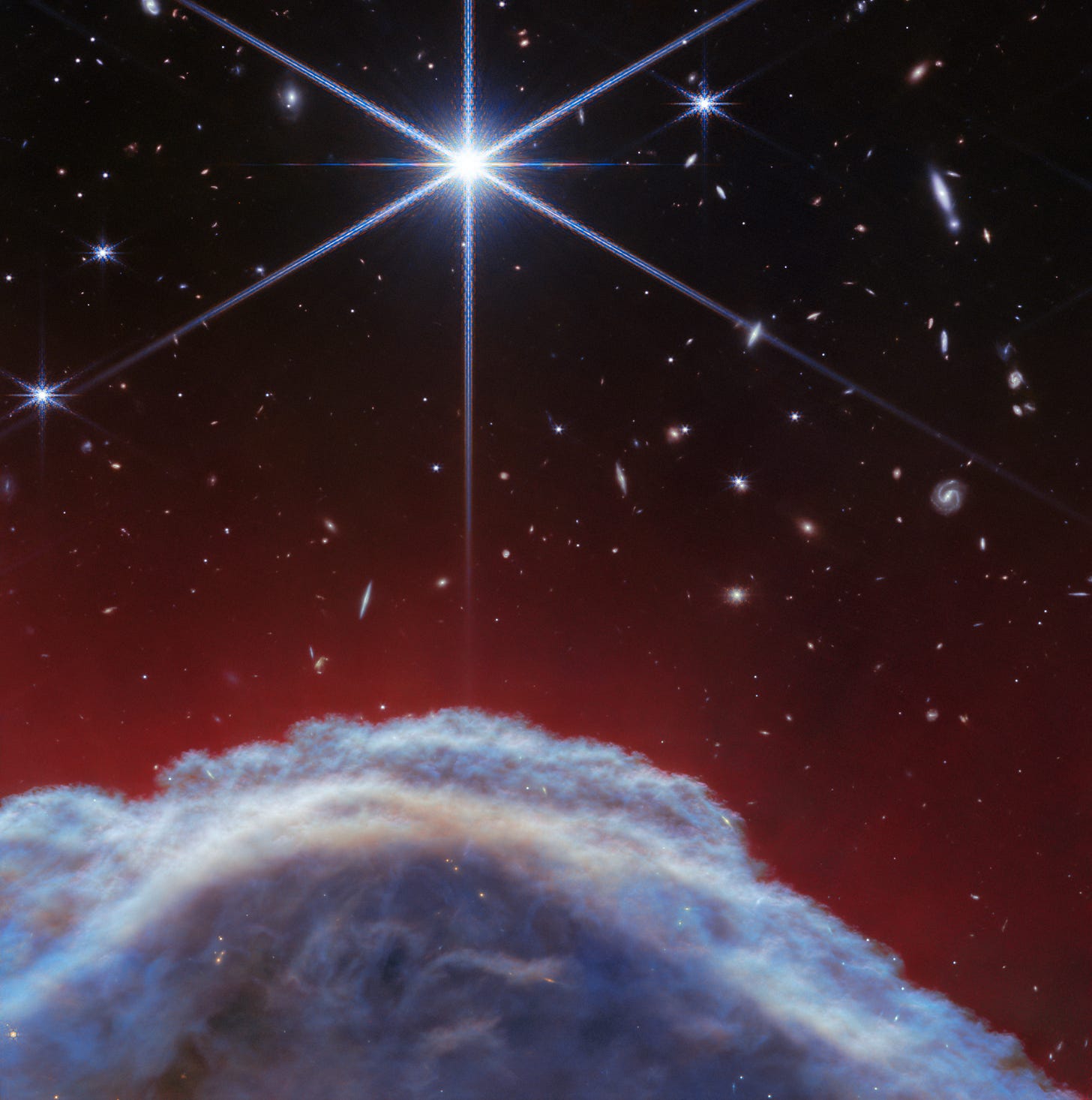
The JWST launched in 2021 after $10 billion in construction and testing. That’s 10x the initial cost estimate put forward in 1999. By July 2022, the telescope was transmitting jaw-dropping images back to earth. These images are informing astrophysicists about our universe. Just last month, the JWST detected the most distant black hole merger ever observed. Scientists estimate that the merger began when the universe was only 740 million years old. (If you, like me, need that number put in context: NASA estimates that the universe is currently 13.7 billion years old ± 200 million years. So, the black hole merger began 12.96 billion years ago.) For more on what makes the JWST unique, I recommend Rigby’s 2023 public lecture at the University of Chicago.
As Senior Project Scientist for JWST, Rigby gets significant access to the telescope. In fact, she uses it as the primary investigator of the research project TEMPLATES (Targeting Extremely Magnified Panchromatic Lensed Arcs and Their Extended Star Formation). This projects uses JWST to directly observe star formation.2 Once astrophysicists have this spatiotemporal data, they will be able to extrapolate new understandings of how stars develop and how matter behaves.
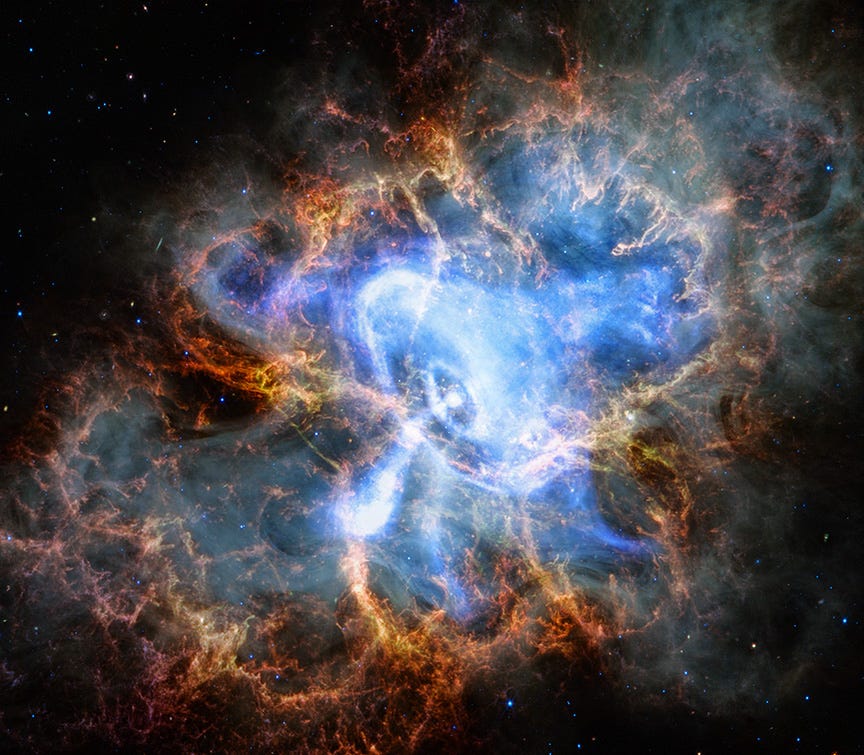
Before we shift to Rigby’s advocacy on behalf of queer astronomers, we have to talk about the telescope’s namesake: James E. Webb, NASA’s second administrator. Webb’s tenure in government overlapped with the lavender scare, a 1940’s and 1950’s moral panic over homosexuality. In 1950, Senator Clyde R. Hoey led a series of hearings investigating whether the federal government employed “homosexuals.” A memorandum in the National Archives shows that Webb advised Senator Hoey on the structure and content of these hearings which ultimately produced the Hoey Report. This report asserted that “sex perverts” (i.e. queer people) employed by the government are national security risks. Three years later, President Dwight Eisenhower copied Hoey’s language when signed Executive Order 10450 which banned federal officials from exhibiting “sexual perversion.”3
It should be noted that the nascent telescope was named after Webb in 2002, 8 years before Rigby joined the team. But in 2021, Scientific American called on NASA to rename the telescope because of Webb’s role in the lavender scare. The following year, the Royal Astronomical Society changed their editorial policy to not spell out Webb’s name when the JWST was referenced in any of its journals. However, the policy would be immediately lifted when NASA investigated the matter and released its findings in a public report. Less than a month later, NASA released a report of their investigation, and the Webb Telescope Team issued a press release that began with “Advancing full equality for LGBTQI+ Americans is a core value and priority for NASA.” It went on to announce the team’s decision on a telescope rename: “Based on the available evidence, the agency does not plan to change the name of the James Webb Space Telescope.”
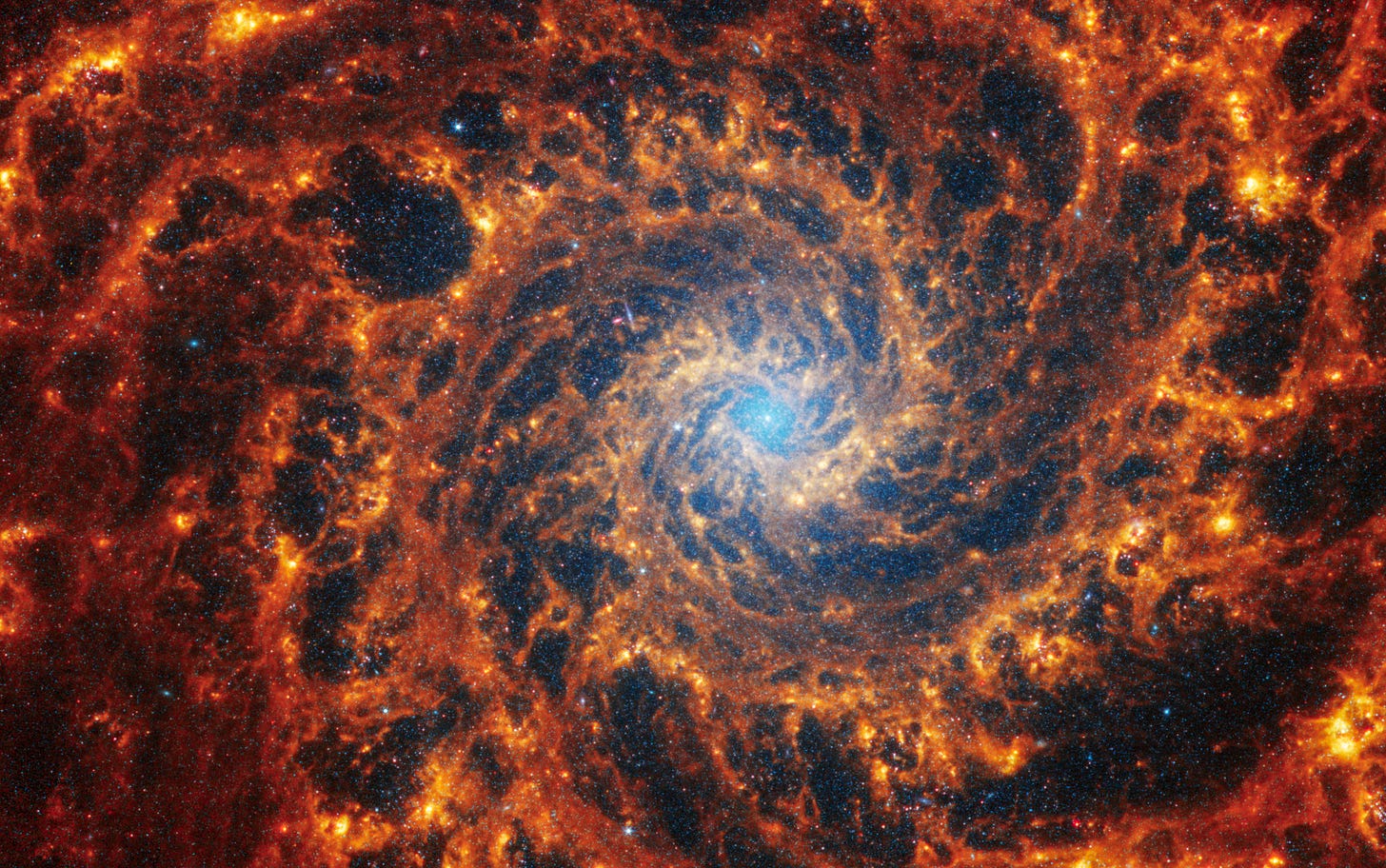
advocating for queer astronomers
Much like the subject of our last Queer Scientist Spotlight, Jane Rigby has been an active advocate for equity in science. When her career began, community among queer astronomers was available but closeted. At the annual winter meeting of the American Astronomical Society, queer astronomers would gather over dinner, but the group couldn’t publicly announce the event. Instead, the details spread by word-of-mouth. Rigby eventually received an invitation to the dinner which became a “lifeline” for her. The folks she met were evidence that queer folks like herself can lead successful careers in astronomy.
In 2012, Rigby used her burgeoning success in the field to institutionalize queer community in the American Astronomical Society as a founding member of the society’s Committee for Sexual-Orientation & Gender Minorities in Astronomy (SGMA). To this day, Rigby serves as the liaison between SGMA and the society’s board of trustees. Over the last 12 years, SGMA has developed best practices for supporting queer astrophysicists, established a speaker’s bureau to educate departments on these practices, and formalized community for trans astronomers (which is, of course, called Transtronomers).
Rigby credits her work in queer communities for her leadership style: “Asking people what they needed to be successful at a task; thanking them; finding out what motivates them; bundling negative feedback with positive feedback. I use those skills every day.” Often, this approach is different from cishet colleagues who tend to be less invested in community building as a professional end. But, Rigby is not afraid of pushback:
I think that surviving as an LGBT person has given me more resilience. You said something condescending to me at a meeting? I’ve had Westboro Baptist Church scream at me. I’ve had the legitimacy of my own marriage debated in the Supreme Court of California, and the Supreme Court of the United States. You don’t scare me.
Queer Scientist Spotlight: Ben Barres
I remember when I first heard about Ben Barres. It was October 2017, and I was at a small scientific conference on specialized types of cells in the nervous system (brain, spinal cord, and nerves) called glia. I was there to share some of my resear…
Anti-sodomy laws were rendered unconstitutional by the Supreme Court two years later (2003) in the Lawrence v. Texas decision.
Girl, WTF!!! This is SO COOL!!!
In 1993, President Bill Clinton formally repealed the executive order. However, both the Department of State and the US Civil Service Commission had already rejected the policy.







